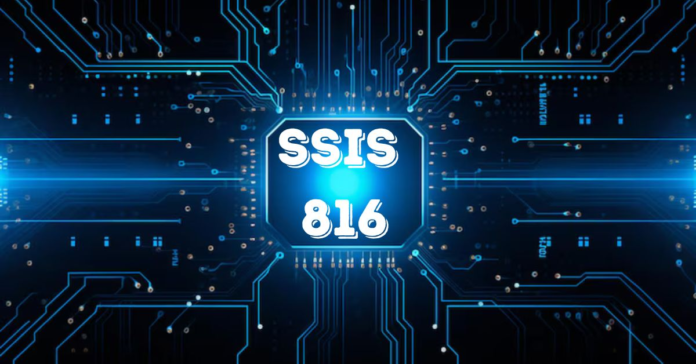Introduction to SSIS816
SSIS816 is an advanced data integration tool that has revolutionized the way organizations handle data. Standing for SQL Server Integration Services, version 816, this tool is designed to facilitate the process of data extraction, transformation, and loading (ETL). It provides robust capabilities to integrate data from various sources, transform it into a suitable format, and load it into different destinations.
The Evolution of SSIS816
Historical Background
The development of SSIS816 is rooted in the need for more sophisticated data management tools. Initially, data integration was a cumbersome process involving manual coding and numerous tools. SSIS was introduced as part of Microsoft SQL Server to streamline this process. Over the years, it has undergone significant enhancements, with version 816 being one of the most advanced iterations.
Key Improvements in SSIS816
SSIS816 includes several enhancements over its predecessors. These improvements include better performance, more integration options, enhanced security features, and a more user-friendly interface. These updates have made SSIS816 a preferred choice for data professionals.
Core Features of SSIS816
Data Integration
One of the primary features of SSIS816 is its ability to integrate data from diverse sources. Whether it’s relational databases, flat files, or cloud-based services, SSIS816 can handle them all. This versatility is crucial for organizations that need to consolidate data from multiple systems.
Data Transformation
Transforming data into a usable format is a critical aspect of any ETL process. SSIS816 offers a wide range of transformation tasks, including data cleansing, aggregation, and sorting. These tasks ensure that the data is accurate and ready for analysis.
Data Loading
Loading data into a destination is the final step in the ETL process. SSIS816 supports various destinations, such as SQL Server databases, Excel files, and data warehouses. Its efficient loading mechanisms ensure that large volumes of data are processed quickly and accurately.
Advanced Features of SSIS816
Integration with Azure
SSIS816 provides seamless integration with Azure, Microsoft’s cloud platform. This integration allows organizations to leverage cloud-based resources for their ETL processes, offering scalability and flexibility.
Improved Performance
Performance enhancements in SSIS816 include better parallel processing capabilities and optimized memory usage. These improvements result in faster ETL processes, even with large datasets.
Enhanced Security
Security is a top priority in SSIS816. It includes features such as data encryption, role-based access control, and secure connections. These security measures ensure that sensitive data is protected throughout the ETL process.
Practical Applications of SSIS816
Business Intelligence
SSIS816 is a vital tool for business intelligence (BI). It helps organizations gather and transform data, making it ready for BI tools such as Power BI. This process enables businesses to gain insights and make data-driven decisions.
Data Warehousing
Building and maintaining a data warehouse is a complex task. SSIS816 simplifies this process by providing robust ETL capabilities. It can handle large volumes of data, ensuring that the data warehouse is up-to-date and accurate.
Data Migration
Migrating data from one system to another is a common requirement. SSIS816 offers efficient data migration tools that minimize downtime and ensure data integrity. This feature is especially useful during system upgrades or consolidations.
Getting Started with SSIS816
Installation and Setup
Installing SSIS816 is straightforward. It can be installed as part of the SQL Server installation process or separately. Once installed, users can start creating SSIS packages using SQL Server Data Tools (SSDT).
Creating an SSIS Package
An SSIS package is a collection of tasks that define the ETL process. Creating a package involves defining the data sources, transformations, and destinations. SSIS816 provides a visual interface for this process, making it accessible even to users with limited programming experience.
Deploying and Executing Packages
Once an SSIS package is created, it needs to be deployed to an SSIS server. Deployment options include SQL Server, Azure Data Factory, and the SSIS Catalog. After deployment, packages can be executed manually or scheduled to run automatically.
Best Practices for Using SSIS816
Designing Efficient Packages
Efficiency is crucial in ETL processes. Designing efficient SSIS packages involves using optimal data flow paths, minimizing unnecessary transformations, and leveraging parallel processing. These practices ensure that packages run quickly and use resources effectively.
Monitoring and Troubleshooting
Monitoring SSIS packages is essential to ensure they run smoothly. It provides logging and error handling features that help identify and resolve issues. Regular monitoring and troubleshooting keep the ETL processes reliable and efficient.
Keeping Up with Updates
Microsoft regularly updates SSIS with new features and improvements. Staying up-to-date with these updates ensures that users can take advantage of the latest enhancements and security features.
Conclusion
SSIS816 is a powerful tool that has transformed the ETL landscape. Its comprehensive features, improved performance, and robust security make it an invaluable asset for organizations of all sizes. Whether you’re building a data warehouse, migrating data, or implementing a business intelligence solution, it provides the tools you need to succeed. By following best practices and leveraging its advanced capabilities, users can maximize the benefits of it and drive their data initiatives forward.
FAQs about SSIS816
1.What is SSIS816?
SSIS816 is a version of SQL Server Integration Services, an ETL (Extract, Transform, Load) tool provided by Microsoft. It helps organizations to efficiently manage data integration processes by extracting data from various sources, transforming it into a desired format, and loading it into target destinations like databases or data warehouses.
2.What are the key features of SSIS816?
SSIS816 includes several key features such as:
- Data Integration: Supports multiple data sources including databases, flat files, and cloud services.
- Data Transformation: Offers various transformation tasks like data cleansing, aggregation, and sorting.
- Data Loading: Efficiently loads data into destinations such as SQL Server databases and Excel files.
- Azure Integration: Seamlessly integrates with Azure cloud services.
- Enhanced Performance: Improved parallel processing and optimized memory usage.
- Security: Includes encryption, role-based access control, and secure connections.
3.How does SSIS816 improve performance compared to previous versions?
It improves performance through better parallel processing capabilities and optimized memory usage. These enhancements allow it to handle large datasets more efficiently, resulting in faster ETL processes. The ability to leverage cloud resources via Azure integration also contributes to performance improvements by providing scalability and flexibility.
4.Can SSIS816 be used for cloud-based data integration?
Yes, for cloud-based data integration it can be used. It provides seamless integration with Azure, Microsoft’s cloud platform. This allows organizations to perform ETL processes using cloud resources, offering benefits such as scalability, flexibility, and reduced infrastructure costs.
5.What are some best practices for using SSIS816?
Best practices for using it include:
- Designing Efficient Packages: Optimize data flow paths, minimize unnecessary transformations, and use parallel processing to improve efficiency.
- Monitoring and Troubleshooting: Use logging and error handling features to identify and resolve issues quickly. Regular monitoring ensures that ETL processes run smoothly.
Keeping Up with Updates: Stay informed about the latest updates and features from Microsoft to take advantage of new enhancements and security improvements.
Read more interesting articles on DigitalNewsAlerts.



